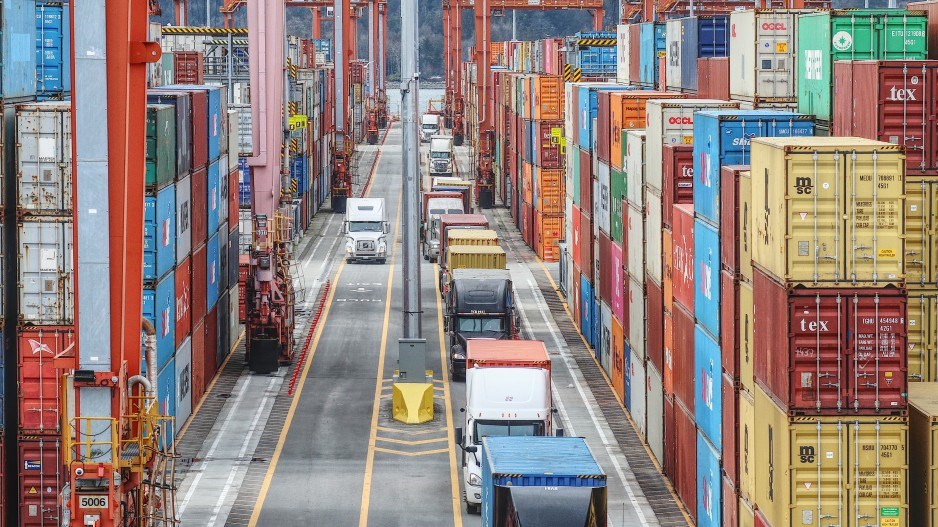Navigating lower numbers in a down-bound economy will be on the radar of major shipping lines and port terminals in 2023’s second half as 2022’s multibillion-dollar revenue spillover into 2023 from last year’s extraordinary earnings bonanza recedes.
That is among the takeaways from recently released maritime supply chain financial results and insights.
A US$13 billion net income haul for the container shipping industry in 2023’s first quarter would be good news in any other year for an industry that is notoriously volatile and often finds itself drifting in seas of red ink rather than generating profit.
But, as container shipping analyst John McCown pointed out in his most recent roundup of quarterly financial results, Q1 2023 marks the third straight quarterly drop in earnings for major ocean carriers after seven consecutive quarters of record profits and a 78 per cent nosedive from the US$58.7 billion in earnings reaped during the same quarter in 2022.
Those numbers reflect the overall drop in consumer goods demand as fears of recession persist in North America and the increase in shipping industry capacity coupled with the decrease in port congestion erode freight rates on the transpacific and other major trade routes.
But ship owners are not the only link in the supply chain with reasons to be nervous.
Vancouver and other major West Coast container hubs will soon be feeling the knock-on effect of that slowdown.
As Simon Heaney pointed out earlier this year, “demand, both in terms of port throughput and loaded trade volumes, remains very weak.”
Presenting his company’s updated 2023 outlook in late April, the senior manager of container research at U.K.-based shipping consultancy Drewry, estimated that port throughput globally declined 3.1 per cent in the year’s first quarter compared with the same quarter in 2022.
Heaney added that any increase in demand this year will not be enough to offset the massive increase in container shipping capacity resulting from the “ordering frenzy [of new ships] that we saw in 2021, when there was a record 4.4 million TEUs [20-foot-equivalent units] contracted.”
He said Drewry is expecting the global container fleet to increase by 4.7 per cent in 2023. But Heaney added that when “the comfort blanket of port congestion” is taken away, the effective year-on-year rise in shipping capacity will be closer to 25 per cent.
“And the timing of those new ships coming in from those orders couldn’t be much worse coincided with the slump in volumes.”
Drewry’s Q1 2023 port equity index, which tracks the stock market performance of publicly traded port companies, shows a value loss of 2.1 per cent compared with Q4 2022’s increase of 19.8 per cent.
According to McCown’s numbers, inbound volume at the 10 largest U.S. ports dropped close to 21 per cent in April, which he said was “the third worst year-over-year decline in memory” and the seventh straight month of year-over-year double-digit declines.
West Coast ports, he noted, recorded bigger volume declines (down 21.9 per cent) than their East Coast counterparts (down 19.9 per cent).
That reflects, in part, the ongoing migration of transpacific container traffic away from North America’s West Coast to ports in Mexico, the Gulf of Mexico and the U.S. East Coast.
Stalled contract negotiations between West Coast dockworkers and maritime employers could accelerate that migration as shippers worried about the reliability of cargo movement through West Coast North American ports resulting from potential labour disruptions reroute cargo.
Approximately 22,000 unionized workers at U.S. West Coast ports have been without a contract since July 2022. Frustration over the lack of progress in securing a new contract recently boiled over into temporary closures of port terminals in Long Beach and Oakland.
In B.C., the contract between the BC Maritime Employers Association (BCMEA) and 7,400 International Longshore & Warehouse Union Canada (ILWU) dockworkers and foremen employed at Canada’s West Coast ports expired at the end of March.
Negotiations between the two sides entered a 21-day cooling off period on May 31 following the expiration of a Federal Mediation and Conciliation Service conciliation process that the union had kick-started when it filed a notice of dispute with the federal government following only a handful of preliminary contract discussions with the BCMEA.
Heaney added that Europe and North America “look like being the … sick dogs this year as far as demand is concerned.”
He said Drewry anticipates transpacific spot and contract freight rates to drop on average by approximately 60 per cent this year.
In his company’s May analysis of global container cargo movement, Christian Roeloffs, CEO of Hamburg, Germany, based logistics technology company Container xChange, said that even though a global recession has been avoided thus far in 2023, “the shipping industry is experiencing a freight recession, mainly because overstocked retailers are postponing inventory replenishment cycles.”
However, despite the gloomy numbers and news, McCown said his analysis of current container shipping data indicates that the industry will remain profitable.
“But, to channel Yogi Berra, it’s tough to make predictions, especially about the future.”
twitter.com/timothyrenshaw



